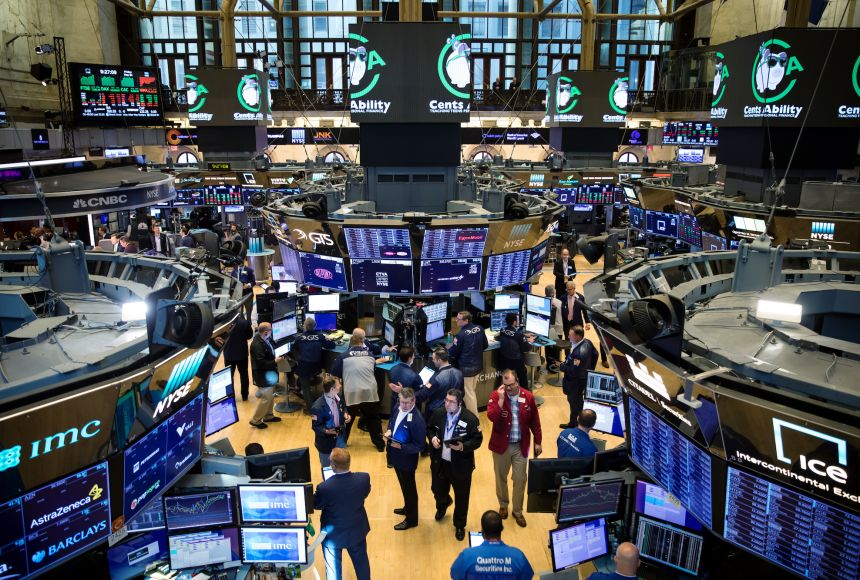Conclusions
In addition to changes in market structure and the business models of stock exchanges,
secondary stock markets are today fragmented along two lines. First, trading is fragmented
between stock exchanges and a large number of off-exchange venues, such as stock
exchange-like alternative electronic trading platforms and OTC centres, including internal
trading systems of firms. In the United States, about 30% of all trading takes place in
off-exchange venues and in Europe about 50% of the total trade volume is executed outside
of the traditional exchanges.
Second, there is fragmentation between lit volume where investors have access to pretrade information about buying and selling interests, and dark volume where pre-trade
information is not available to the public. Lit and dark trading both occur on exchanges and
off-exchange venues
. In 2015, the total volume of dark trading in the United States –
including dark trading in both exchanges and off-exchange venues – was 42%. In Europe
the share of dark volume with respect to total trading volume varies between countries
from 35% to 48%.
Commitment to maintain market fairness and a level playing field among investors
have given rise to regulatory initiatives in both Europe and the United States. As part of
this, it is expected that the rationale for existing differences in regulatory regimes between
different types of trading venues will be scrutinised. It remains to be seen what the effects
will be in terms of stock market fragmentation.
Notes
1. For example, the National Association of Securities Dealers (NASD) in the United States was
established as a national securities association and is a Self-Regulatory Organisation (SRO). In
July 2007, the Securities and Exchange Commission (US SEC) approved the merger of NASD and the
regulatory operations of the NYSE to form the Financial Industry Regulatory Authority (FINRA). It
is important to note that national securities exchanges in the United States are also SROs with
regulatory obligations, such as enforcing their rules and the federal securities laws with respect to
their members. These obligations do not apply to ATSs (US SEC, 2015a).
2. Since the adoption of Regulation ATS in 1998, ATSs have become more prevalent in equity trading
in the United States. It is important to note, however, that dark ATSs are not covered by the Order
Protection Rule of Regulation NMS, which means that exchanges and ECNs are not required to
route orders to dark venues.
3. Out of 85 trading venues operating as ATSs as of 1 December 2015, we have identified 44 venues
that in 2015 traded NMS stocks based on data retrieved from FINRA.
4. NYSE, Market Share of consolidated tape volume by year (1976-2003), www.nyxdata.com.
5. The National Stock Exchange (NSX) ceased trading operations in May 2014, but continued to be
registered as a national securities exchange during 2015. Since trading did not resume on NSX
until the end of 2015, market share data for NSX is not included in Figure 4.3.
6. US SEC, Alternative Trading Systems with Form ATS on File with the SEC as of 1 December 2015,
www.sec.gov/foia/ats/atslist1215.pdf.
7. Rule 600 of Regulation NMS defines an “NMS stock” as “any NMS security other than an option” and
defines an “NMS security” as “any security or class of securities for which transaction reports are
collected, processed, and made available pursuant to an effective transaction reporting plan, or an
effective national market system plan for reporting transactions in listed options.” In general, the
term “NMS Stock” refers to exchange-listed equity securities.
8. On US stock exchanges, however, displayed orders are given execution priority over non-displayed
orders at the same price.
9. Turquoise is an MTF which is majority owned by the London Stock Exchange, in partnership with
12 investment banks.
4. CHANGING BUSINESS MODELS OF STOCK EXCHANGES AND STOCK MARKET FRAGMENTATION
140 OECD BUSINESS AND FINANCE OUTLOOK 2016 © OECD 2016
10. A trade that is executed bilaterally off the order book of an exchange, but executed subject to the
exchange’s rules and reported to the exchange, is classified as an off-order book on exchange trade.
11. The European Union has also stated that the definitions of regulated markets and MTFs “should be
clarified and remain closely aligned with each other to reflect the fact that they represent
effectively the same organised trading functionality.” (Source: Regulation No. 600/2014 in markets
in financial instruments and amending Regulation No 648/2012).
12. OECD calculations based on data from Thomson Reuters New Issues Database.
References
AFME (2011), “The Nature and Scale of OTC Equity Trading in Europe”, April.
Aguilar, L.A. (2015), “Shedding Light on Dark Pools”, Public Statement by SEC Commissioner, 18 November,
www.sec.gov/news/statement/shedding-light-on-dark-pools.html#_edn5.
Bradley, H. and R.E. Litan (2010), Choking The Recovery: Why New Growth Companies Aren’t Going Public and
Unrecognised Risks of Future Market Disruptions, Ewing Marion Kauffman.
Cournède, B., O. Denk and P. Hoeller (2015), “Finance and Inclusive Growth”, OECD Economic Policy
Papers, No. 14, OECD Publishing, Paris


